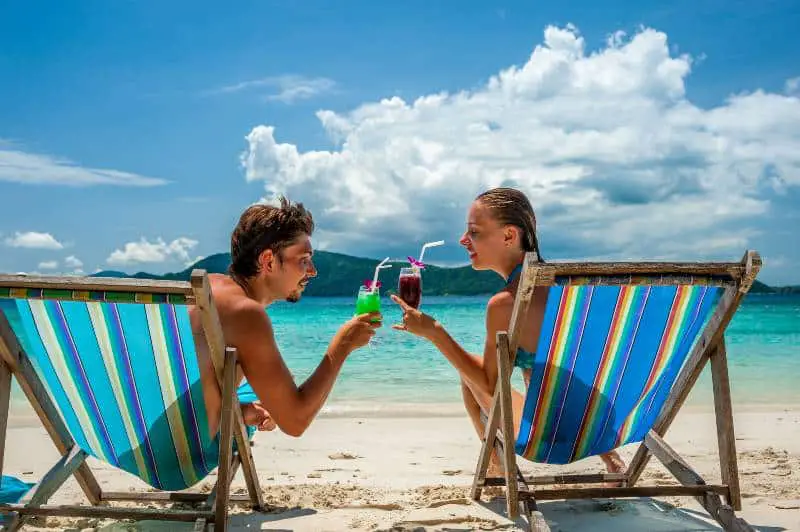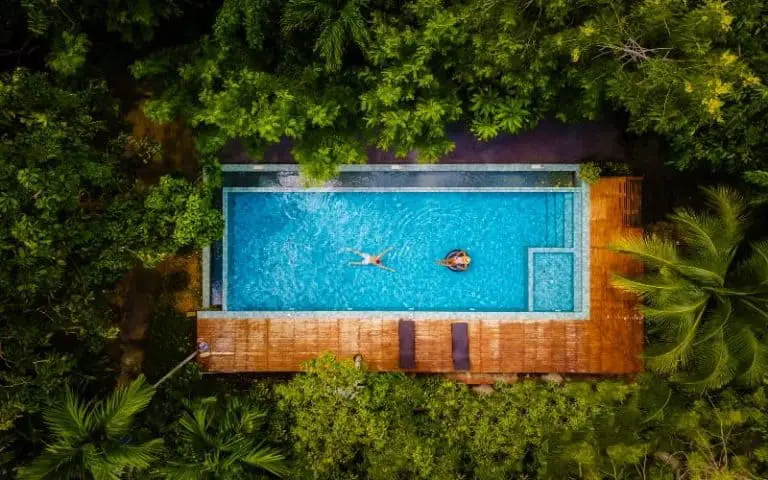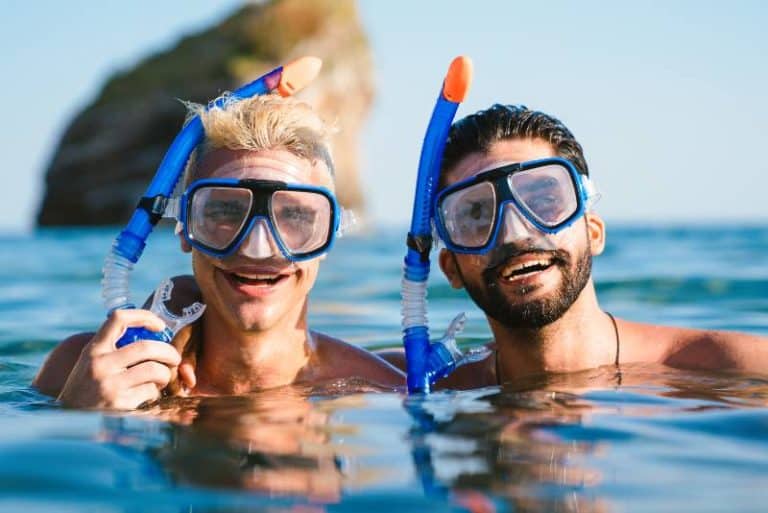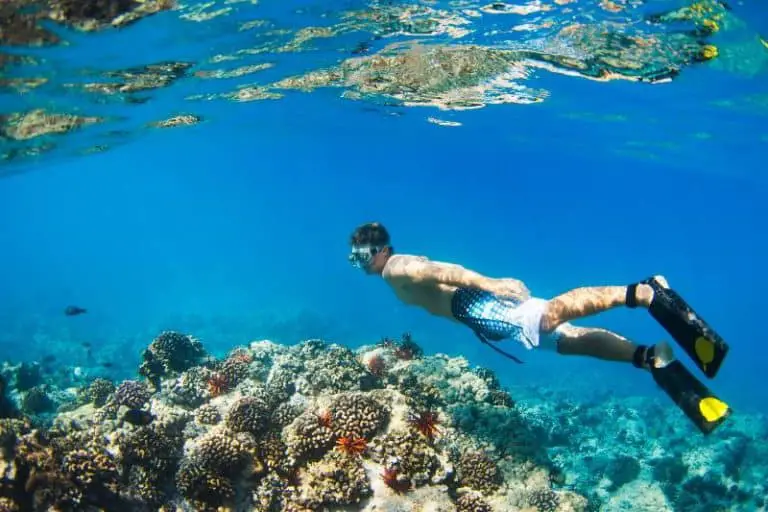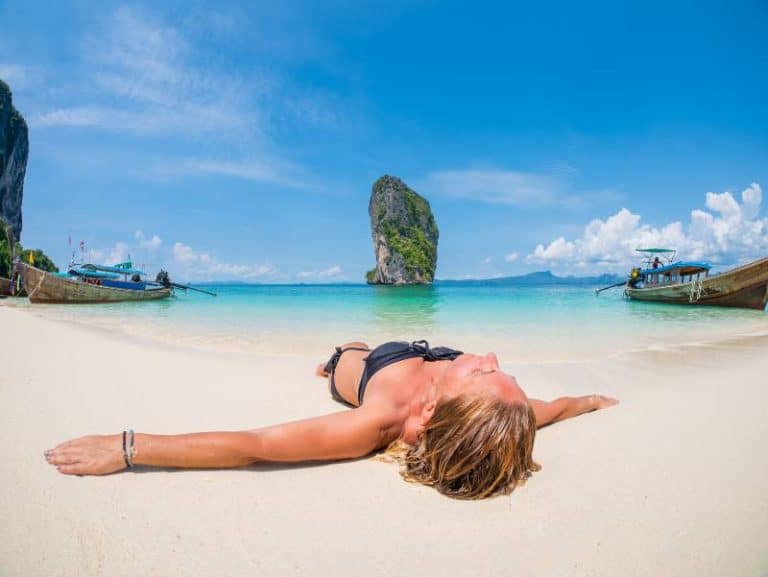Untouched Thailand: Coastal Paradises You Haven’t Heard Of
Are you looking to escape the trappings of mainstream tourism and venture beyond the typical tourist scenes? If so, exploring the hidden gems tucked away along Thailand’s shorelines is a must. With a tranquil sandy beach, stunning aquamarine waters, captivating coral reefs, and countless outdoor activities – from kite-surfing to kayaking – there really is something for everyone. Take your pick from secluded spots on some of Thailand’s most untouched islands, or take advantage of unexpected sites in bustling beachfront towns.
In this post, I will be shining light on some of Thailand’s lesser-known coastal paradises that are just waiting to be discovered. Read ahead for sun-kissed beach escapes both familiar and obscure!
Discover Thailand’s lesser-known coastal paradises, where serene hidden beaches offer exquisite escapes from bustling tourist destinations. Embrace pristine sands, turquoise waters, and unique ecosystems while respecting local cultures and contributing to preservation efforts. Ensure these beautiful, tranquil havens retain their natural allure for future generations by embracing sustainable tourism practices.
Key Takeaways
- Beyond Thailand’s popular shores lie beaches that offer unparalleled tranquility, raw beauty, and an authentic Thai experience.
- The allure of these hidden gems brings with it a responsibility for visitors to respect and preserve their pristine nature.
- Lesser-known beaches in Thailand provide not just serenity, but a range of activities from snorkeling in untouched coral gardens to traditional Thai beachside dining.
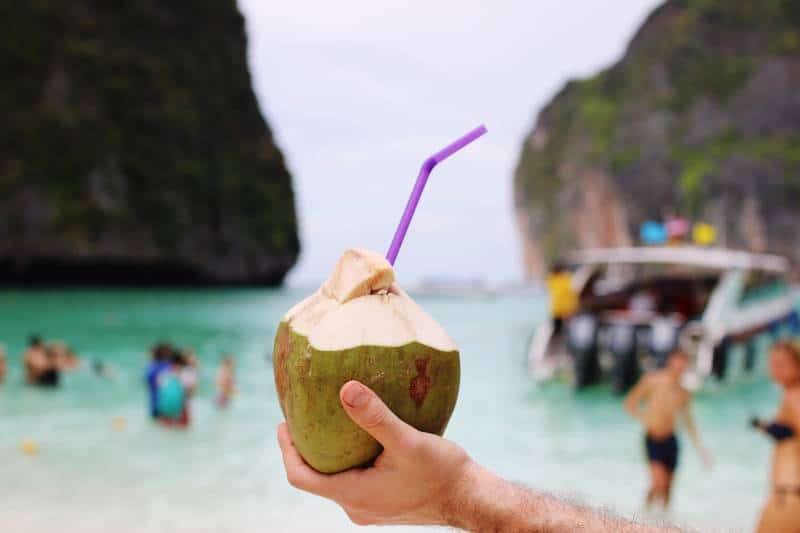
Historical Context
The Emergence of Popular Beaches as Tourist Hubs
Throughout history, beaches have long been a place for recreation, relaxation, and rejuvenation. With the advent of technology and globalization, the popularity of certain beaches has risen exponentially, transforming them into bustling tourist hubs.
The Evolution of Beach Tourism
From the early 20th century onwards, beach tourism began to gain momentum. Improved transportation systems made it possible for people to travel further and more comfortably, giving them access to previously remote coastal areas. Moreover, the growth of communication technology played a crucial role in spreading news about these paradisiacal destinations.
As more and more visitors arrived, local and foreign investors, seeing a potential goldmine, began to develop hotels, resorts, restaurants, and other attractions catering to tourists’ needs. This further fueled the popularity and accessibility of these beaches.
Famous Examples
Some of the most famous beach destinations that have undergone a transformation include Copacabana in Brazil, Cancún in Mexico, Bondi Beach in Australia, and Phuket in Thailand, to name a few. These destinations have seen a significant transformation from quaint fishing villages or unknown stretches of sands to vibrant, cosmopolitan tourist hotspots.
Thailand’s Rich Coastal History: A Nod to Thai Coastal Gems
Thailand, a country synonymous with pristine beaches and crystal-clear waters, is home to an incredibly vibrant coastal history. Before the rise of popular tourism in this Southeast Asian nation, the coastal regions of Thailand were considerably different from what’s witnessed today.
A Deep-Rooted Connection to the Sea
The people of Thailand have always had strong ties to the sea. Historically, coastal communities made their living primarily through fishing, tapping into a rich variety of marine resources found in the warm waters of the Andaman Sea and the Gulf of Thailand. As a result, Thai coastal cultures developed unique traditions, cuisine, and architecture centered around this marine abundance.
Cultural Significance
Maritime trade flourished along these coastlines, connecting ancient Thai Kingdoms to global trade routes. The maritime trade facilitated the exchange of goods, ideas, and cultures with neighboring countries like China, India, and those in the Malay Archipelago. Consequently, Thailand’s coastal regions developed into melting pots of diverse cultural influences, which are still present today in art, food, and architecture.
Preserving Thailand’s Coastal Heritage
In the face of rapidly expanding tourism, it’s essential to simultaneously preserve and celebrate Thailand’s rich coastal history. Many local communities are coming together in various endeavors to conserve the environment, protect marine life, and showcase their diverse cultural heritage.
By knowing the historical context and the deep-rooted cultural identity connected to Thailand’s coasts, one can truly appreciate the pristine white sands, azure waters, and the gentle whispers of the sea – the very essence of what defines Thailand’s coastal splendor.
Criteria for ‘Hidden Beaches’
The idea of a hidden beach evokes images of a secluded and pristine paradise, far off the beaten path. There are specific criteria these places must meet to truly be considered ‘hidden beaches.’ Here are a few of the main requirements:
Less Touristy
The first crucial criterion for a hidden beach is that it should be less explored by people and significantly less crowded than the usual tourist-visited beaches. This does not necessarily mean it should be unknown or isolated, but it should remain untouched by the commercialization that other more prominent beaches are often subject to. This adds to the tranquility and untouched sense of the place and provides a truly relaxing environment away from the bustling crowds.
Untouched Natural Beauty
Hidden beaches should still display their natural beauty, untouched by human development. They should remain in their original, pristine condition, showcasing the authentic charm inherently present in locations not tainted by commercial enterprises. The water should be clear, the surroundings clean, and any wildlife should be unaccustomed to regular human contact.
Rich in Biodiversity
A quantifiable measure of a hidden beach’s attractiveness is the richness of its biodiversity. These areas are often replete with unique marine and terrestrial fauna and flora, a great many of them endemic to that specific geographical location. A hidden beach should offer a diverse array of marine life, wildlife, and plant species, which are yet to be significantly disturbed or depleted by human interference.
A destination that meets these criteria can truly be referred to as a ‘hidden beach’ offering not just a breathtaking vista of sandy shores and turquoise seas, but also an unparalleled experience of peace, solitude, and communion with untamed nature.
Planning a trip to Thailand? Get ready for an amazing experience! To truly embrace the rich Thai culture, immerse yourself in the local way of life. Celebrate holidays like a local, learn about customs, traditions, and festivities. Dive into the vibrant Thai culture and make your visit unforgettable. Check out our comprehensive guide for more insights!
Top Hidden Beaches
Thailand is home to numerous seaside gems that offer an exquisite experience of peacefulness, natural beauty, and seclusion. For those looking to venture away from mainstream tourist attractions and visit lesser-known paradises, here are the top hidden beaches waiting to be discovered:
Koh Samui – Taling Ngam Beach
Located on the western coastline of Koh Samui, Taling Ngam Beach offers a serene escape from the island’s popular spots. With its calm waters and picturesque sunsets, this tranquil haven is perfect for a quiet beach retreat.
Koh Lanta – Bamboo Beach (Mai Phai Beach)
A secluded and beautiful stretch of sand on the southern tip of Koh Lanta, Bamboo Beach remains a secret haven for nature and beach lovers. Its crystal-clear waters offer fantastic snorkeling opportunities, complete with a vibrant marine ecosystem.
Andaman Sea – Similan Islands
Located in the Andaman Sea, the Similan Islands are a group of eleven stunning and unspoiled islands offering pristine and secluded beaches. Known for their extraordinary coral reefs and marine life, these hidden beaches are ideal for diving and snorkeling enthusiasts.
Koh Lipe – Sunrise Beach
Offering powdery white sands and turquoise waters, Sunrise Beach on Koh Lipe remains one of Thailand’s lesser-known hidden beaches. It’s perfect for snorkeling, spending a lazy day by the sea, or witnessing gorgeous sunrises.
Koh Kradan – Sunset Beach
Situated on the southwest coast of Koh Kradan, Sunset Beach remains relatively uncrowded and peaceful. Hidden amidst dense jungle, this tranquil beach is perfect for swimming, relaxing in hammocks, and watching breathtaking sunsets.
Koh Phra Thong – Golden Buddha Beach
Located in Phang Nga Province, Koh Phra Thong’s Golden Buddha Beach is an incredibly unspoiled and secluded stretch of coastline. This hidden beach offers untouched beauty, pristine eco-resorts, and abundant birdlife to observe and appreciate.
Koh Kood – Ao Phrao Beach
Ao Phrao Beach, nestled away on the west coast of Koh Kood, is famed for its shimmering white sands and crystal clear waters. This beach offers a captivating and serene atmosphere, ideal for relaxation and snorkeling opportunities.
Koh Mak – Ao Suan Yai Beach
One of Koh Mak’s best-kept secrets, Ao Suan Yai Beach boasts calm and shallow waters, accompanied by pristine white sands. Perfect for families and those seeking a quiet beach getaway, this beach offers spectacular sunsets and lush surroundings.
Koh Mai Phai – Bamboo Island Beach
A magnificent and peaceful retreat, Bamboo Island Beach can be found in the Andaman Sea as part of the Phi Phi archipelago. With its fine white sands, coral reefs, and azure waters, this lesser-known beach is an idyllic spot to relax, swim, and snorkel.
Ecosystem and Conservation
Thailand’s hidden beaches are not just sites of unparalleled beauty; they are also biodiversity hotspots and fragile ecosystems that host an array of unique species. Whether it’s the vibrant coral reefs abundant with marine life off the shores of Koh Lipe or the dense mangrove forests surrounding the beaches of Koh Mak, these lesser-known coastal paradises are home to complex and important ecosystems.
Importance of Preserving These Hidden Gems
Preserving these locations is crucial for multiple reasons:
- Biodiversity: Preservation efforts are vital to protect the unique biodiversity found in these locations, much of which is endemic to these ecosystems and cannot be found elsewhere.
- Natural Balance: These ecosystems provide critical natural services including climate regulation, pollution control, and fostering fish populations that local communities rely on for their livelihood.
- Cultural Heritage: Often, these hidden beaches carry historical and cultural importance for local communities. Their preservation could also mean the protection of these cultural legacies.
Role of Tourism in Conservation vs. Degradation
Tourism is a double-edged sword when it comes to the preservation of these hidden beaches. On one hand, it can contribute to local economies and raise international awareness about these ecosystems’ importance, encouraging conservation efforts. Responsible tourism, in particular, can support conservation by funding preservation initiatives and sustainable development.
For instance, entrance fees to national parks or marine protected areas often directly contribute to maintaining and protecting these environments. Additionally, responsible tourists are more likely to follow guidelines such as not littering or touching coral reefs, thus helping to preserve these delicate ecosystems.
On the other hand, unchecked tourism can lead to degradation and loss of these places. Overcrowding, pollution from waste, disruption of wildlife, and construction of sprawling resorts can lead to the destruction of natural habitats and a decrease in biodiversity.
As such, managing these precious hidden beaches requires a careful balance. The goal should be sustainable tourism practices that prioritize thoughtful experiences and respect for local ecosystems while discouraging practices that endanger the delicate balance of these environments. By doing so, we can ensure that these lesser-known coastal paradises of Thailand retain their natural beauty and uniqueness for generations to come.
Planning Your Visit
Embarking on a visit to Thailand’s hidden beaches can truly be the journey of a lifetime, taking you to unspoilt paradises. But to fully enjoy and respect these idyllic locations, you should keep a few things in mind:
Best Times to Visit
The best time to visit Thailand’s hidden beaches largely depends on the specific area you are planning to explore. However, generally speaking:
- The dry season (November to April) tends to be the best time to visit the beaches on the Andaman Sea side, such as Koh Lipe and Koh Phra Thong.
- For the beaches on the Gulf of Thailand like Koh Samui, January to August is usually a good time.
Keep in mind that this can vary from year to year, so check for the most current information before planning your trip.
Essential Things to Pack
Plan to pack light, but don’t forget the essentials:
- Sun Protection: Given Thailand’s tropical climate, a high SPF sunscreen, hat, and UV-protective sunglasses are a must to protect from the intense sun.
- Bathing Suits and Beach Attire: Carry swimsuits, beach towels, and light, breathable clothing.
- Waterproof Bag: To protect your devices and belongings from getting wet.
- Reusable Water Bottle: Stay hydrated and help reduce plastic consumption.
- Snorkeling Gear: If you plan to explore the marine life, consider bringing your own snorkeling gear for better hygiene and cost-efficiency.
- Bug Repellent: To keep away mosquitoes and other insects, especially in the evenings.
Local Customs and Etiquette
Respecting local customs and etiquette is crucial. Here are a few things to consider:
- Dress Appropriately: Thailand is a predominantly Buddhist country, and modest dressing is expected, especially when visiting temples or religious sites. Even on the beaches, it’s respectful to cover up when you leave the sands and venture into local towns or establishments.
- Avoid Touching The Head: The head is considered the most sacred part of the body in Thailand. Avoid touching someone’s head or passing something over it.
- Respectful Photography: Always ask for a local’s permission before taking their photograph.
- Environment-conscious Behavior: Refrain from littering, touching coral reefs or disturbing wildlife. Remember, you are visiting their habitats.
Visiting Thailand’s hidden beaches can be an incredibly rewarding experience, if you appreciate the natural beauty, respect local customs, and act responsibly towards the environment.
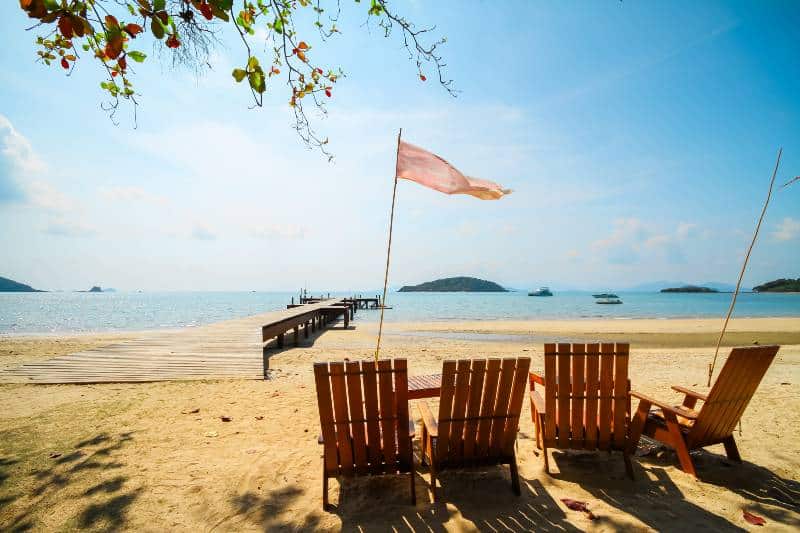
Hidden Beaches: Thailand’s Lesser-Known Coastal Paradises FAQs
What is the unknown island in Thailand?
Koh Lipe, located in the Andaman Sea off the southwestern coast of Thailand, is an island largely unknown to travelers. It’s a small archipelago consisting of four islands that make up part of the Tarutao National Marine Park and are surrounded by vibrant coral reefs and diverse marine life.
What are some other lesser-known beaches in Thailand?
Other lesser-known beaches in Thailand include:
- Koh Phra Thong, a large island on the Andaman Sea off the coast of Phang Nga province. It’s known for its secluded beach and rich biodiversity
- Koh Kradan, an idyllic tropical paradise located near Trang province with stunning coral reefs and clear waters perfect for snorkeling.
What are Thailand’s two famous beaches?
The two most famous beaches in Thailand are probably Pattaya Beach and Phuket’s Patong Beach. Both are located on the east coast of the country and have become popular tourist destinations for their stunning natural scenery, vibrant nightlife, and variety of activities.
What is Thailand known for beaches?
Thailand is famous for its stunning beaches, boasting a wide variety of options from quiet secluded paradises to bustling nightlife spots. Along the Andaman Sea coast, you can find hidden gems such as Koh Lipe and Koh Phra Thong, while the Gulf of Thailand has popular destinations like Pattaya Beach and Patong Beach in Phuket.
Are there any private beaches in Thailand?
Yes, there are a number of private beaches in Thailand. These include luxury resorts such as the Andara Resort & Villas on Phuket’s Kamala Beach, the Rayavadee Resort on Krabi’s Railay Beach, and Anantara Rasananda Koh Phangan in Koh Samui.
Are there any white sand beaches in Thailand?
Yes, Thailand is home to many beautiful white sandy beaches. Some of the most popular include Railay Beach in Krabi, Maya Bay on Koh Phi Phi, and Sairee Beach on Koh Tao.
Are there any good snorkeling spots in Thailand?
Thailand offers some excellent snorkeling spots to explore its vibrant coral reefecosystems. Popular spots include Koh Tao, Khao Lak, and Similans National Park on the Andaman Sea side, as well as Koh Samui in the Gulf of Thailand.
Conclusion
With all its open air markets, delicious food, and beautiful beaches, Thailand floods us with an array of vibrant experiences. And what better way to explore the countless facets of this ever-growing country than by venturing away from the popular tourist sites and discovering its hidden gems?
Hidden Beaches in Thailand offer a perfect escape for those who are searching for tranquility, beauty and an opportunity to relish in their culture’s gastronomic delights.
This venture does not come without responsibility however, as we must respect the land we visit, and take action to ensure its transmission into future generations. So go forth and find your own piece of paradise while enjoying the range of activities each gem has to offer.
From snorkeling on pristine coral gardens to indulging in classic beachside dishes – be sure to arrive with appreciation and leave with memories (and sunscreen!). For more info about living or travelling in Thailand join our newsletter or reach out to us with any questions you may have!
